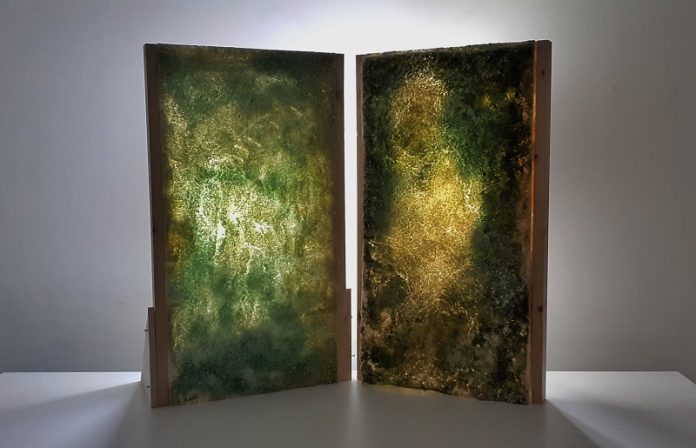
A groundbreaking new building material that can absorb carbon dioxide (CO2) from the atmosphere has been developed by a student at University College London (UCL).
This innovative material, created by a master’s student in UCL’s Bio-Integrated Design program, could significantly reduce the carbon emissions of the construction industry if it is widely used.
The new material, called cyanobacterial engineered living material (C-ELM), was showcased as part of an art installation at the St Andrews Botanic Garden in Scotland.
It consists of translucent panels that contain living cyanobacteria—tiny organisms that perform photosynthesis, similar to plants.
As these bacteria grow, they absorb CO2 from the air and convert it into calcium carbonate, a solid material that traps the carbon, effectively removing it from the atmosphere.
A single kilogram of this C-ELM material can capture up to 350 grams of CO2, while a kilogram of traditional concrete can release as much as 500 grams of CO2 during production.
To put it into perspective, a 150-square-meter wall covered with these panels could lock away about one ton of carbon dioxide.
Prantar Tamuli, the student behind this invention, said his goal was to transform building construction from one of the largest carbon-emitting activities into one of the biggest carbon-sequestering processes.
Tamuli was inspired by stromatolites—ancient structures formed by layers of sediment trapped by algae. He developed C-ELM during the COVID-19 lockdown, working from home without access to a lab or professional equipment.
The specific bacteria used in these panels, Kamptonema animale, grow in long strands that can easily be integrated into the panels.
As these bacteria produce calcium carbonate, they also strengthen the panels, making them both functional and eco-friendly.
These C-ELM panels offer more than just environmental benefits. They are lightweight, absorb sound, allow light to pass through, and provide thermal insulation, which helps improve the energy efficiency of buildings.
The first demonstration of these panels was part of an installation inside the Bioscope pavilion at the St Andrews Botanic Garden. This display, created by the design collective Studio Biocene, highlighted low-carbon construction methods that mimic natural environments.
Professor Marcos Cruz, co-director of the Bio-Integrated Design Program at UCL, believes this biomaterial has great potential. If it can be produced on a large scale and widely used, it could dramatically reduce the carbon footprint of the construction industry. The team at UCL is now working to optimize the material for broader use in building projects.
Dr. Brenda Parker, another co-director of the program, emphasized that breakthroughs like this are possible when different fields of study come together.
By combining biotechnology with architecture and engineering, scientists can develop new ways to design and build more sustainably. Studio Biocene, the collective behind the Bioscope installation, aims to lead the way in creating a greener future by integrating living systems into design practices.
Source: University College London.



